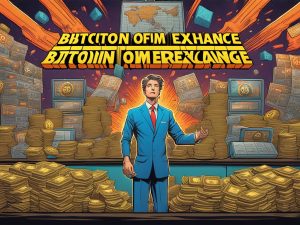Is the Future of Crypto Listings in Jeopardy? Let’s Dive In!
Hey there! It’s always a wild ride in the crypto world, right? Recently, there’s been quite a stir with Binance and Coinbase facing some serious allegations about charging massive fees for token listings. This drama gets right to the core of what it means for projects trying to get on these major exchanges, and honestly, it’s a topic that gets a lot of us Crypto aficionados buzzing. So, let’s break it down together!
Key Takeaways:
- Allegations about million-dollar listing fees for tokens on Binance and Coinbase have emerged.
- Simon Dedic highlights a project’s extreme struggle with listing fees and processes.
- Brian Armstrong from Coinbase and Changpeng Zhao from Binance engaged in a back-and-forth regarding these claims.
- There’s a long-standing debate about what constitutes fair listing fees in the crypto exchange landscape.
- The market continues to react to these controversies, which leads to Fear, Uncertainty, and Doubt (FUD).
First off, let’s talk about the crux of this issue. On social media, Simon Dedic—CEO of Moonrock Capital—revealed that a Tier 1 crypto project was asked to fork over 15% of its token supply just to be listed on Binance. That’s no small ask! I mean, $50 to $100 million just for visibility on an exchange? Most up-and-coming projects—particularly in a space as volatile and speculative as crypto—would be financially crippled by that kind of requirement. It really makes you wonder if these platforms are more interested in making a buck than in fostering innovation.
The response from Brian Armstrong of Coinbase only added fuel to the fire. He pointed out that asset listings on Coinbase are supposed to be free. But wait—Andre Cronje, the founder of Sonic Labs, fired back. He claimed that Coinbase had done exactly the opposite, asking for up to $300 million for a listing. Talk about a he-said-she-said moment! It’s funny to think that we’re in this wild realm of digital currencies, and yet we still have the same back-and-forth that we see in traditional markets.
No matter how you slice it, these accusations come with serious repercussions for the market and investors. The speculation they trigger—this ever-present FUD—can lead to price fluctuations that make even the most stable coins lose their cool. When people hear about exorbitant fees and questionable practices, their knee-jerk reaction is often to pull back and reassess their investments. It creates a ripple effect that can shake the foundation of trust we’ve built in the crypto ecosystem.
Now, what’s particularly noteworthy here is the reaction from Changpeng Zhao (CZ) of Binance and Yi He, Binance’s co-founder. They both denied these allegations, labeling them as FUD. CZ even urged everyone to focus on building projects, stating that Bitcoin never paid any listing fees to make it to where it is today. It echoes a sort of ‘let’s put our heads down and build’ mentality, which is admirable but feels a bit idealistic given the current competitive landscape.
Practical Tip: As the dust settles, if you’re an investor or thinking about entering the market, take the time to research potential projects thoroughly. Look behind the listings and really assess whether a project has a strong foundation and a viable use case rather than just trying to get on an exchange because they have "high visibility."
Here’s where I want to get a bit personal. As a young analyst in this space, I find it super inspirational when projects come together without listing fees draining their resources. It really shows the power of innovation. It’s like the old adage about building a better mousetrap—if you create something truly valuable, the world will beat a path to your door, or in our case, digital wallet. I believe the crypto space thrives on creativity and clever solutions, rather than traditional gatekeeping by exchanges.
In closing, let’s reflect on this: amid all the drama around listing fees and exchange rivalries, what’s really important? Is it the prestige of being featured on a major platform, or is it about the actual value a project delivers to its users and the broader market? As investors, how do we reconcile the two? Are we too influenced by the prestige of an exchange when we should be looking deeper into the value and innovation itself?
That’s something worth pondering as we navigate the ever-evolving crypto landscape. What do you think? Are high listing fees a necessary evil, or should exchanges be doing more to support new projects?





 By
By
 By
By
 By
By


 By
By